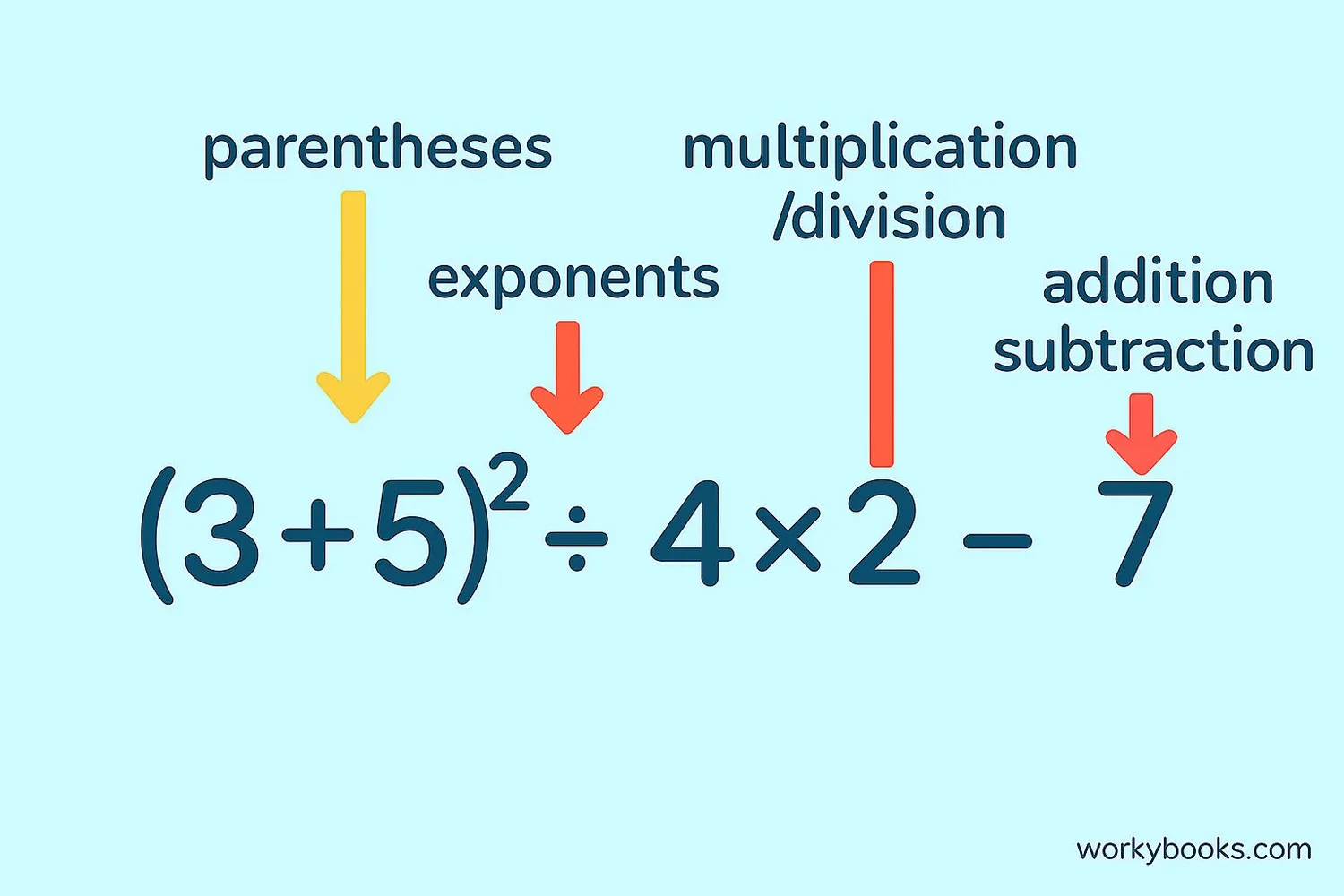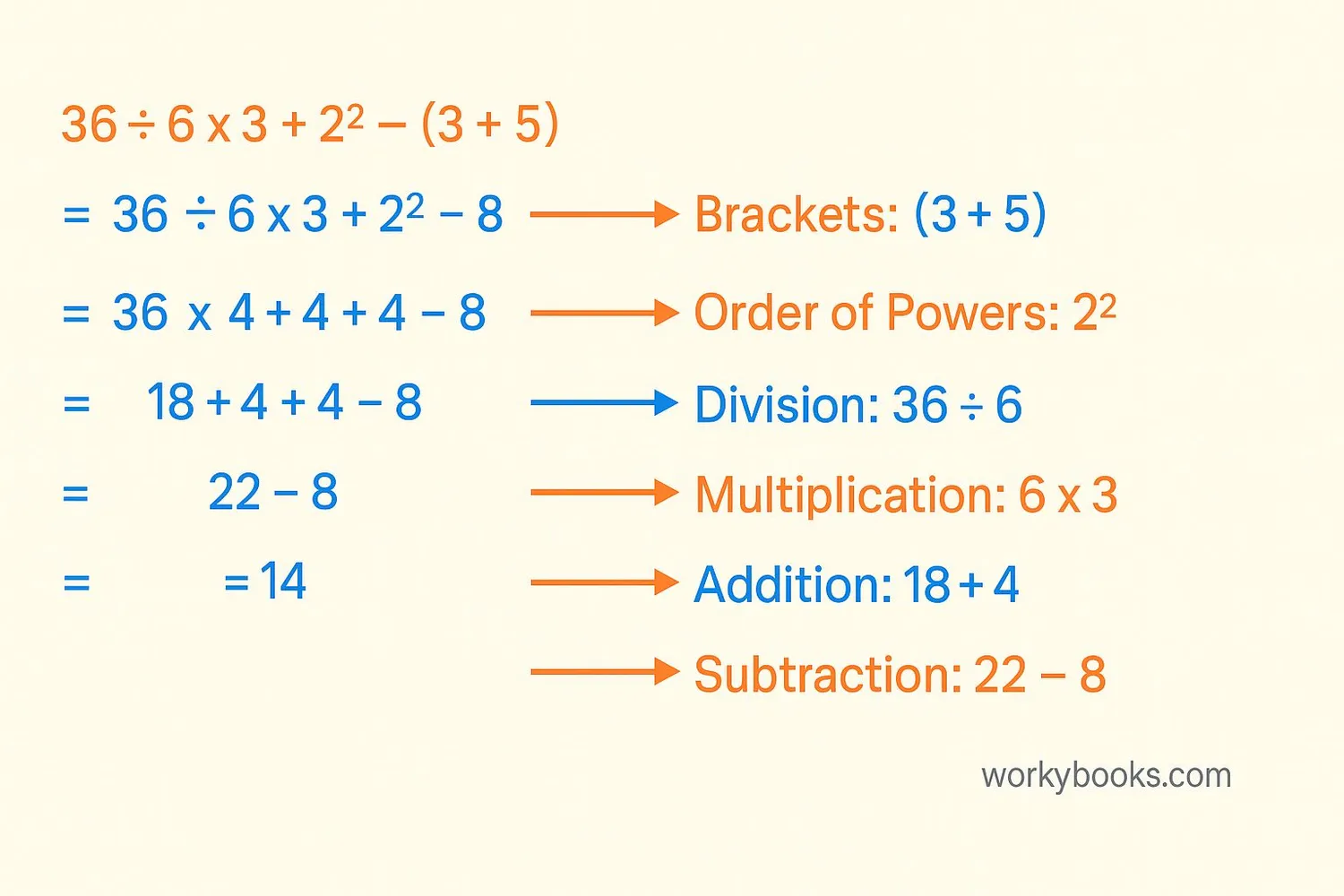Order of Operations - Definition, Examples, Quiz, FAQ, Trivia
Learn the rules for solving math problems correctly with PEMDAS and BODMAS
What is Order of Operations?

The Order of Operations is a set of rules that tells us which part of a math expression to solve first. Without these rules, people might solve the same problem in different ways and get different answers!
Why do we need these rules? Imagine a math problem like this: 3 + 5 × 2. If you add first, you get 8 × 2 = 16. But if you multiply first, you get 3 + 10 = 13. Which one is correct? The Order of Operations gives us the correct sequence so everyone solves math problems the same way.
The most common ways to remember these rules are with the acronyms PEMDAS (Please Excuse My Dear Aunt Sally) and BODMAS (Brackets Orders Division Multiplication Addition Subtraction). Both tell us to solve expressions in this order:
Key Concept
The Order of Operations ensures that everyone solves math expressions in the same way, getting the same correct answer.
Understanding PEMDAS and BODMAS

PEMDAS and BODMAS are two ways to remember the same order of operations. Let's break them down:
PEMDAS
E - Exponents
M - Multiplication
D - Division
A - Addition
S - Subtraction
"Please Excuse My Dear Aunt Sally"
BODMAS
O - Orders (exponents and roots)
D - Division
M - Multiplication
A - Addition
S - Subtraction
"Brackets Orders Division Multiplication Addition Subtraction"
Important things to remember:
1. Multiplication and Division have the same priority - solve them from left to right.
2. Addition and Subtraction have the same priority - solve them from left to right.
3. Parentheses/Brackets are always solved first, from the inside out.
Remember
When you have both multiplication and division in an expression, work from left to right. The same applies to addition and subtraction.
Step-by-Step Examples

Let's solve some problems using the Order of Operations:
Step 1: Solve parentheses first → (5 + 3) = 8
Step 2: Now multiply → 8 × 2 = 16
Step 1: Division and multiplication have same priority, work left to right
Step 2: 12 ÷ 4 = 3
Step 3: 3 × 3 = 9
Step 1: Exponents first → 5² = 25
Step 2: Multiplication → 25 × 3 = 75
Step 3: Addition → 4 + 75 = 79
Step 1: Parentheses first → (3 - 1) = 2
Step 2: Division → 12 ÷ 2 = 6
Step 3: Multiplication → 6 × 2 = 12
Step 4: Subtraction → 20 - 12 = 8
Practice Tip
Always rewrite the expression after each step to avoid mistakes. Circle the part you're solving next to help you focus.
Practice Quiz
Test your understanding with this 5-question quiz. Choose the correct answer for each question.
Frequently Asked Questions
Here are answers to common questions about the order of operations:
Math Trivia
Discover interesting facts about math and the order of operations:
Historical Origins
The modern order of operations was developed in the 16th century by mathematicians who recognized the need for standardized rules. Before this, mathematicians used different conventions.
Calculator Logic
All modern calculators follow the order of operations rules. This is why they give the correct answer to expressions like 1 + 2 × 3 = 7 instead of 9, which you might get if you solved left to right.
Global Variations
While most countries use PEMDAS or BODMAS, some regions have different conventions. In parts of Europe, the division symbol ÷ is sometimes interpreted differently, but the core order remains similar.
Complex Expressions
The longest mathematical expression ever solved using order of operations had over 1,000 operations! Mathematicians use computers to verify such complex calculations.


